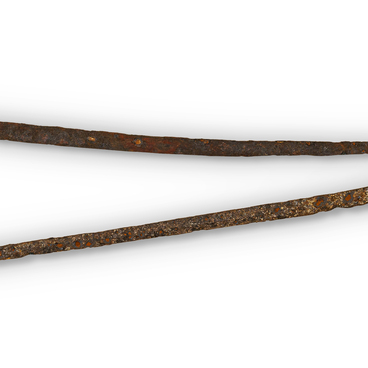The drilled stone ax from the collection dates back to the Bronze Age. It was manufactured in the 3rd millennium BCE and was discovered by archaeologists near the city of Voronezh.
Stone axes were very important tools during the Stone Age. The idea of attaching a stone tool (a chopper) to a handle originated in the late Paleolithic period and was further developed during the Mesolithic and Neolithic periods.
Initially, the oldest stone axes were retouched flint tools. Later they were made from various types of stone through grinding and drilling. By the Bronze Age, stone axes had reached a high level of refinement in terms of their shape. Stone axes were multi-purpose versatile tools.
In fact, axes became indispensable for settlers and nomadic shepherds, allowing them to clear significant areas of woodland for fields or pastures. In addition to their practical purpose, ancient stone axes also had non-utilitarian functions. During the late Neolithic and Early Metal Ages, polished axes were a major attribute of warriors. It is known that these weapons were used in battle, as evidenced by fractured skulls and broken bones discovered by scientists.
Battle axes were often crafted specifically for the burial of an individual. Such an ax would not be used for its intended purpose during one’s lifetime, but would have to be kept by the individual during their lifetime or accompany them in burial. The ritual hoards of polished Neolithic axes have proved that these weapons were probably used in ritualistic practices. These artifacts were often sourced from distant locations and made from valuable materials such as jadeite, omphacite, or even crystal.
The production of drilled stone axes necessitated a certain level of skill development and the use of specialized tools. Hard stone rocks, such as granite and diorite, could serve as raw material for the manufacture of axes. Holes were made using primitive machines, such as the bow drill.
Despite their external simplicity, these ancient devices had all the essential kinematic components of modern drilling machines, including the ability to rotate the tool on its axis. Their effectiveness has been verified through numerous experiments conducted by modern reconstructionists.




